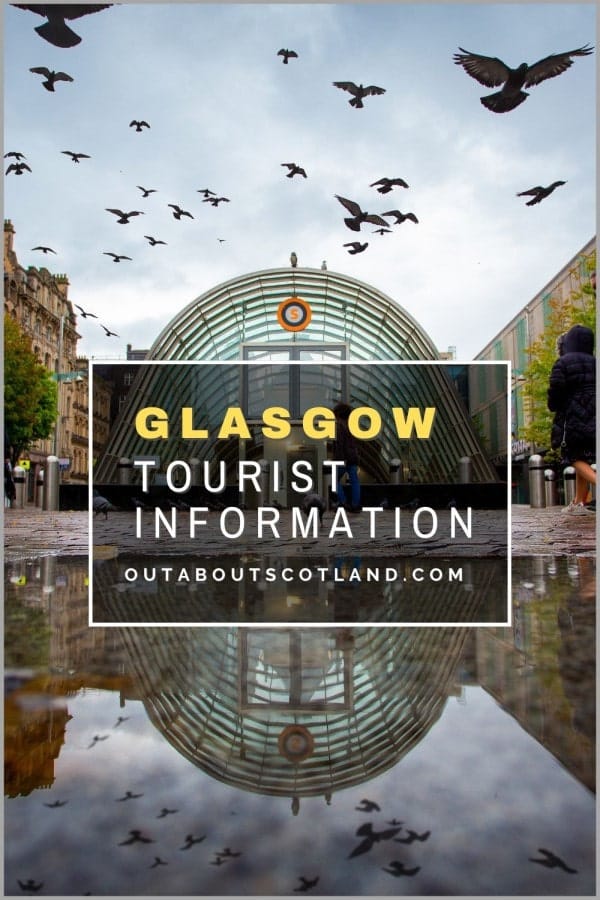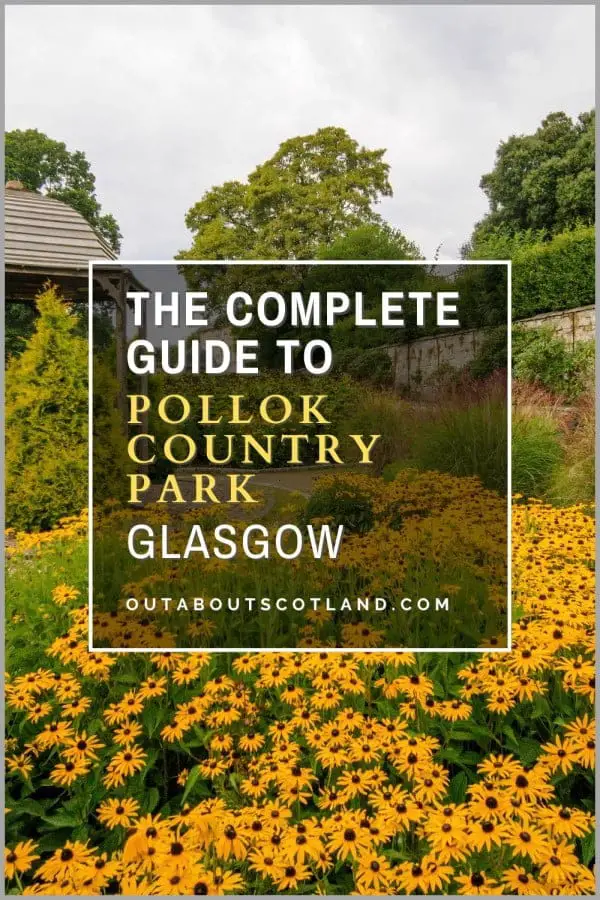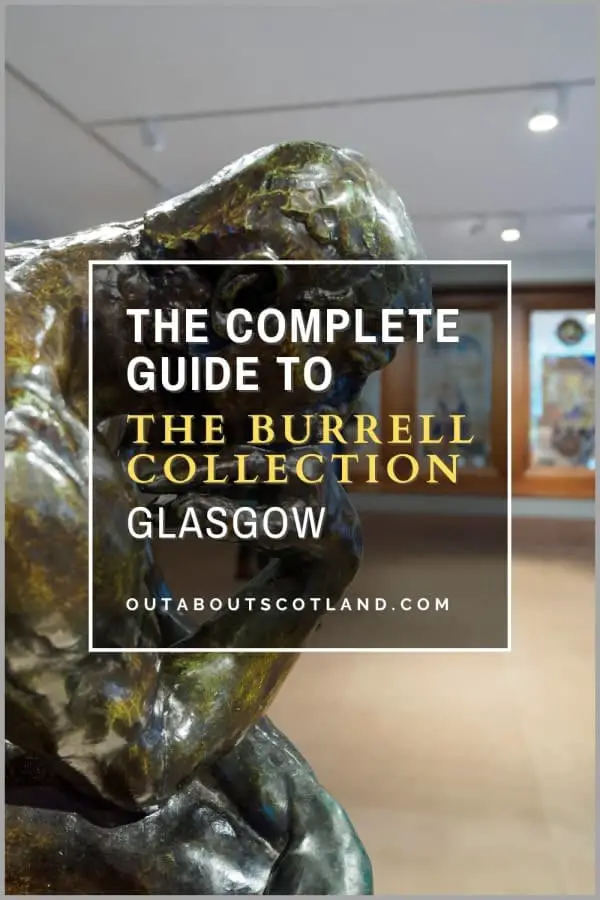The Burrell Collection, located in Pollok Country Park, is one of Scotland’s largest free museums. The vast collection of artworks was donated to Glasgow by Sir William Burrell in 1944, and it’s now one of the top attractions in the city.
In total, there are more than 9,000 objects in the Burrell Collection, which include tapestries, paintings, sculptures, weaponry, stained glass, and pottery, many of which were created by major artists including Rodin, Degas, and Cezanne.
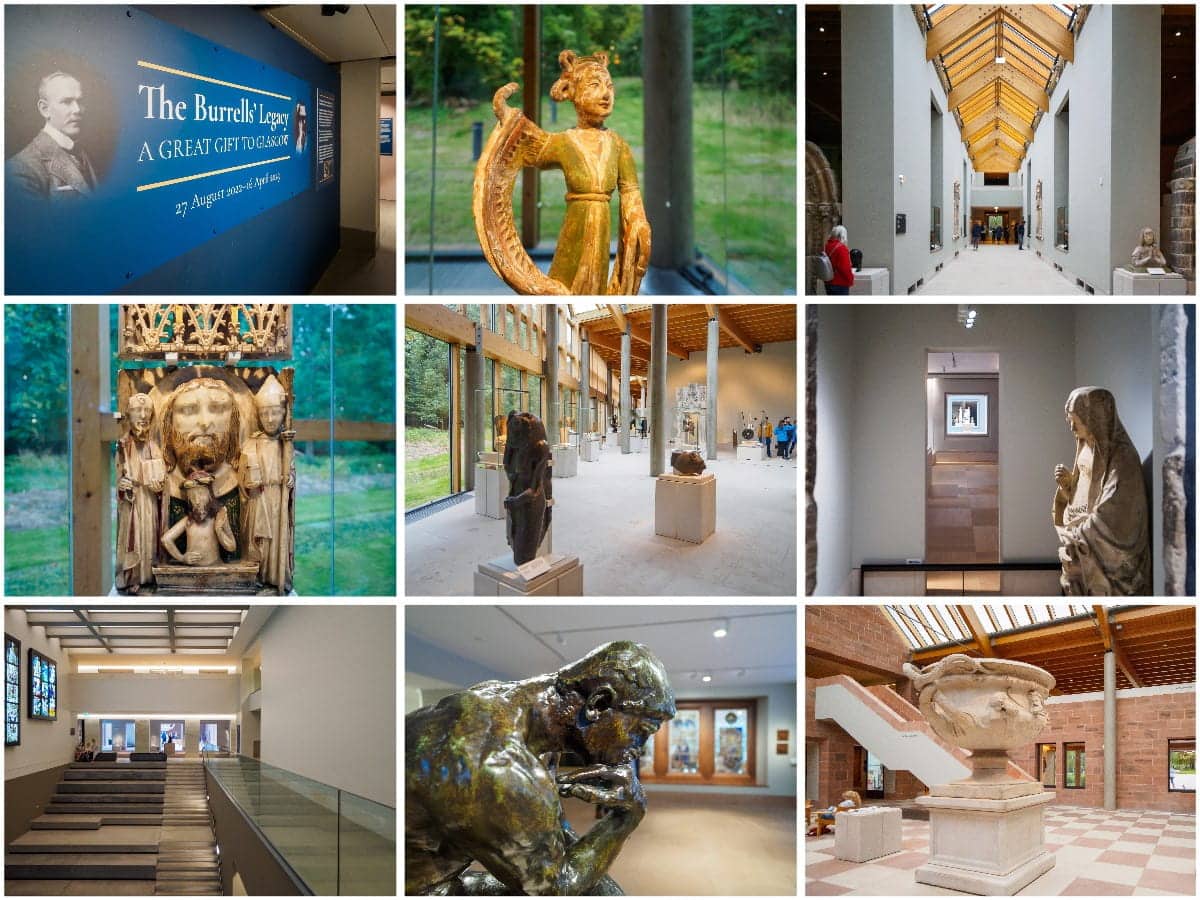
| Address: | Pollok Country Park, 2060 Pollokshaws Road, Bellahouston, Glasgow, G43 1AT |
| Opening Hours: | Monday to Thursday and Saturday: 10 am to 5 pm Friday and Sunday: 11 am to 5 pm |
| Admission Price: | Free |
| Parking: | There is a paid car park outside The Burrell Collection building in Pollok Country Park. Charges apply from 10 am to 6 pm, either £2.50 for 4 hours or £4.50 for all-day parking. Payment can be made by cash and RingGo. |
| Contact: | Tel: 0141 287 2550 Email: museums@glasgowlife.org.uk |
| Facilities: | Cafe and restaurant, gift shop, outside seating, toilets, disabled and pushchair access, wheelchair loan, hearing loop, BSL displays, changing place toilets, cloakroom, Wi-Fi, water fountains. |
| Photos: | YouTube Video |
Overview
When it comes to free attractions, nowhere else in Scotland comes close to Glasgow. Between the cathedral, Kelvingrove Museum, The Tall Ship, Glasgow Botanic Gardens and a dozen other attractions, visitors can spend countless hours enjoying the top sights of the city without spending a single penny.
Contrary to popular belief, there are also a huge number of public parks in Glasgow, and in fact, it’s one of the greenest cities in the UK thanks to award-winning parks like Glasgow Green, Kelvingrove Park, and the superb Pollok Country Park.
If you’re not yet familiar with it, Pollok Country Park is a 146-hectare (361-acre) green space situated south of the River Clyde, around 2.5 miles from the city centre.
The park is a much-loved place for locals to unwind thanks to a spider web of paths that thread their way through it, but it’s also a popular destination for tourists who go to see two major attractions: Pollok House and The Burrell Collection. The National Trust for Scotland is in charge of the former, an opulent manor house, while the latter is a free museum housing a sizable collection of artworks and antiquities.
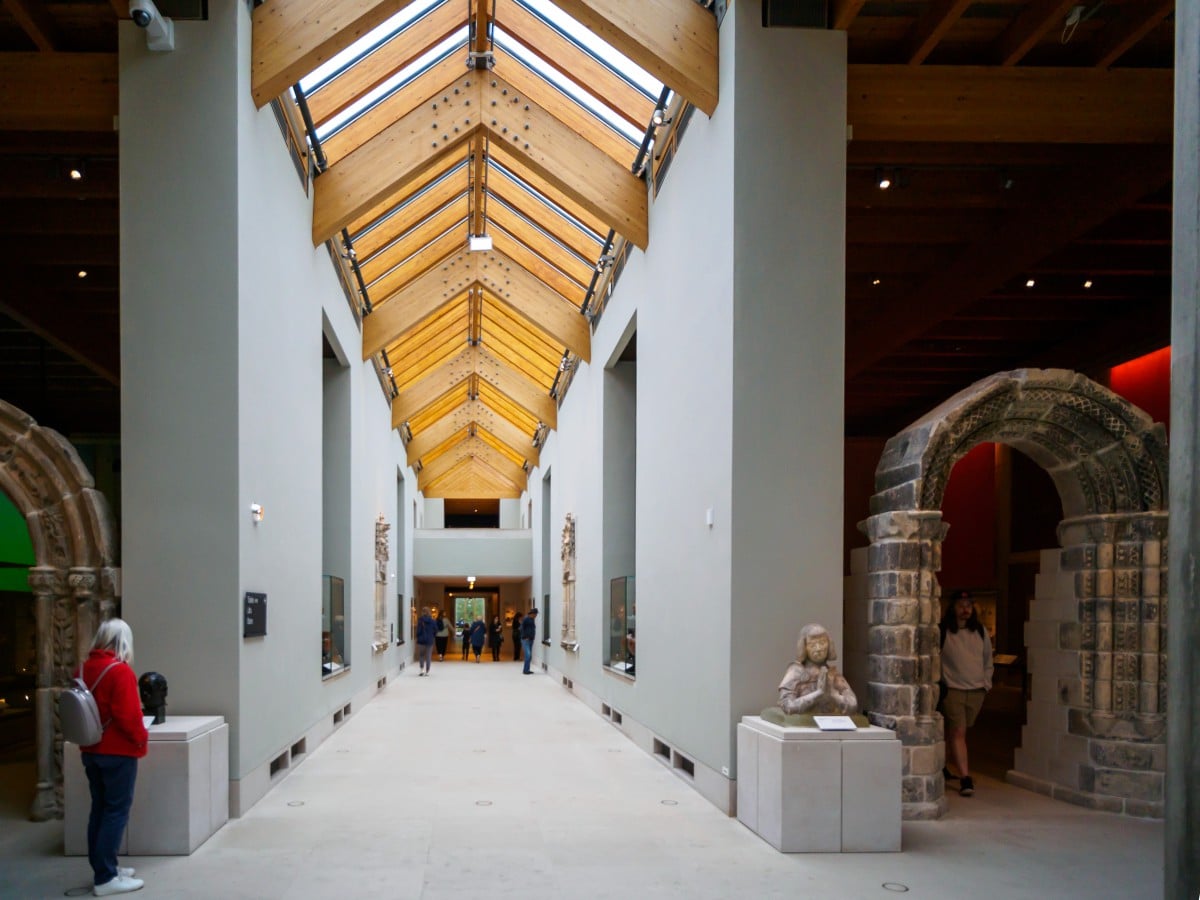
The Burrell Collection takes its name from Sir Wiliam Burrell, a Glasgow-born shipping magnate who owned one of Britain’s largest cargo shipping empires in the early 1900s. His great wealth enabled Sir William to pursue his main passion in life—collecting rare artefacts—and, with his wife Constance, he amassed a collection of more than 9,000 objects over 40 years.
When he died, he left his remarkable collection to the city of Glasgow, and today, the Burrell Collection is widely acknowledged as one of the world’s finest privately donated art collections.
The museum initially opened in 1983 and rapidly became one of the most-visited attractions in the region, to the extent that it’s credited as being the driving force behind the rejuvenation of modern Glasgow following decades of post-industrial decline.
Today, interest in The Burrell Collection is as strong as ever following a major refurbishment in 2022 that extended the buildings and opened up a much larger space to display more exhibits than ever before.
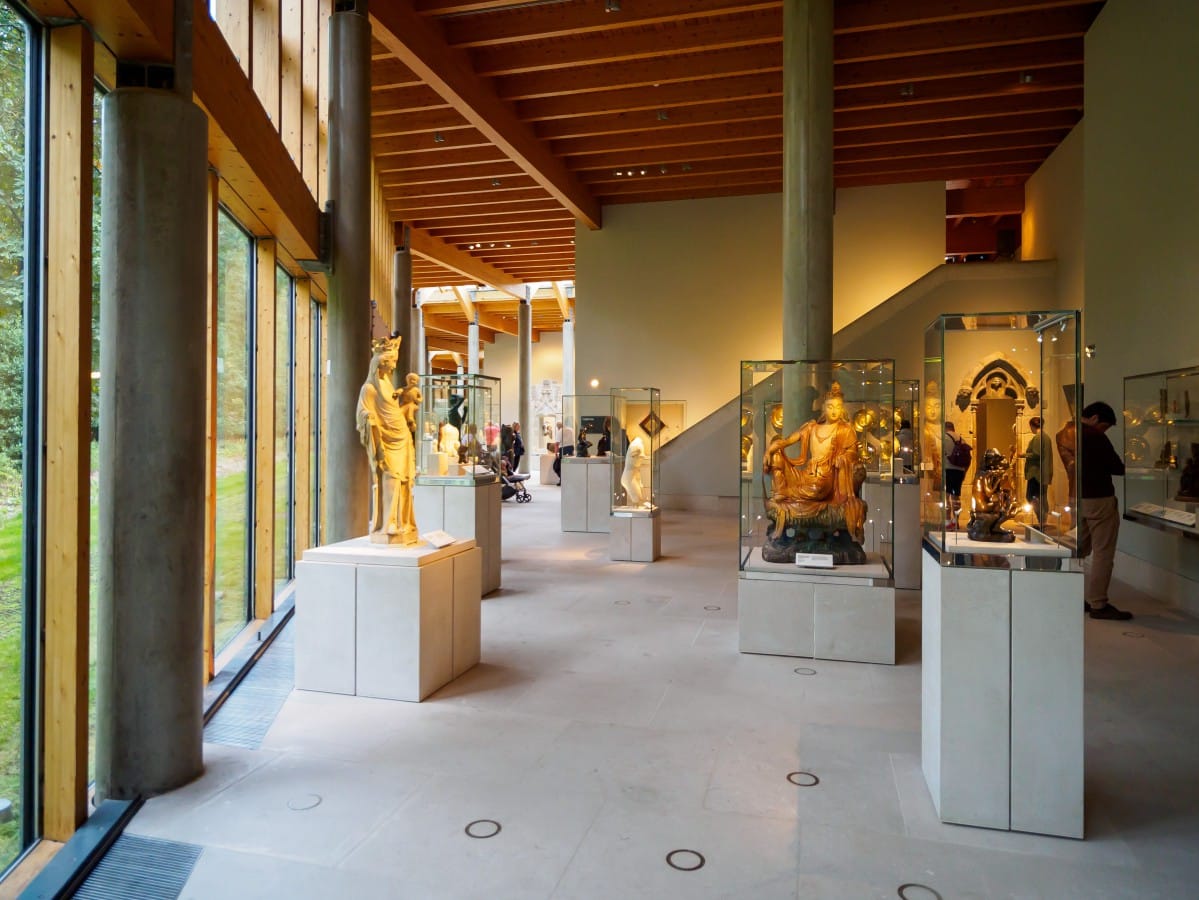
Book Tours in Scotland
The Highlights
1: This is one of the best museums in Glasgow, if not Scotland. The Burrell Collection is home to a huge number of antiquities gathered from across the globe, some of which were crafted by the world’s greatest artists. Highlights include stained glass windows from Canterbury Cathedral, vases from the Ming dynasty, the enormous Warwick Vase, and the bronze sculpture of The Thinker by Rodin.
2: Like all of the best attractions in Glasgow, this one is completely free to enter. There’s enough going on inside The Burrel Collection to keep visitors occupied for a full afternoon, which makes it a great cheap day out for families.
3: The location of The Burrell Collection means visitors can easily enjoy the expansive Pollok Country Park after viewing the artworks. The park is home to a herd of Highland cattle, the beautiful Pollok House, stunning formal gardens, a restored stable and sawmill, a playpark, and miles upon miles of countryside walks.
Visiting Tips
1: Although The Burrell Collection is situated a few miles outside of Glasgow city centre, it’s very easy to travel to. Aside from taking their own car, visitors can take bus services directly to the park via bus numbers 57/57A, 3, and 34/34A.
Once at the park, visitors can take a shuttle bus from any of the entrances to The Burrell Collection and Pollok House. Visitors who prefer taking the train can exit at Pollokshaws West (a 5-minute walk to the park) or Shawlands (a 10-minute walk to the park).
2: While the food in the Burrell Collection cafe and restaurant is top-notch, it’s a wee bit pricey. If you’re looking to save a few quid, you might consider having a picnic on the benches and tables outside the main building or popping over to The Edwardian Kitchen in Pollok House, which is slightly cheaper.
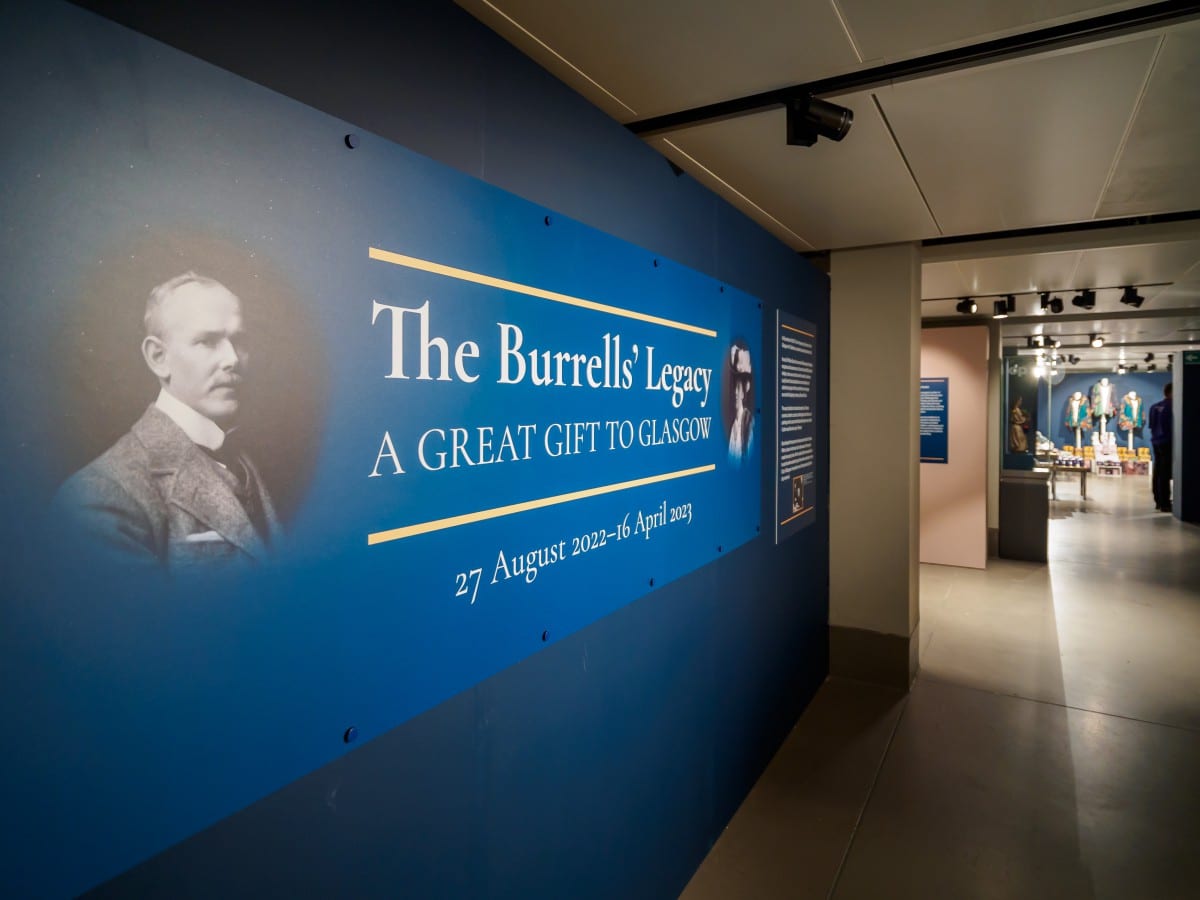
Protect Your Family From Scotland's Biting Midges
- Powerful, reliable protection for up to 8 hours
- Water- and sweat resistant
- Repels midges, mosquitoes, horse flies, sand flies, fleas and ticks
- Safe for use on adults, children over 30 months and pregnant women
- Non-sticky, moisturising with a pleasant fragrance
- Packaging may vary
Tourist Information
Having visited on a couple of occasions, I can confirm it’s easy to get to the Burrell Collection, whether you’re taking a car, a bus, or a train. Driving is always going to be the easiest option as there’s a car park right in front of the main building, but taking the train comes a close second thanks to a free shuttle bus that takes visitors from Pollokshaws West Station to Pollok House and The Burrell Collection between 9.30 am and 6.30 pm.
Buses, meanwhile, stop near the Pollokshaws Road park entrance, which is around a 15-minute walk to the museum entrance, or you can exit at the Haggs Road bus stop, which is around a 10-minute walk to the museum.
Once inside, I recommend speaking to any of the staff near the main entrance, as they have resources that will help you get your bearings, or just setting off at your own pace and seeing what you stumble across.
The main entrance provides access to the ground floor, which houses the main exhibition space, and it’s there that visitors can view priceless artworks and sculptures such as The Red Ballet Skirts by Degas and The Thinker by Rodin.
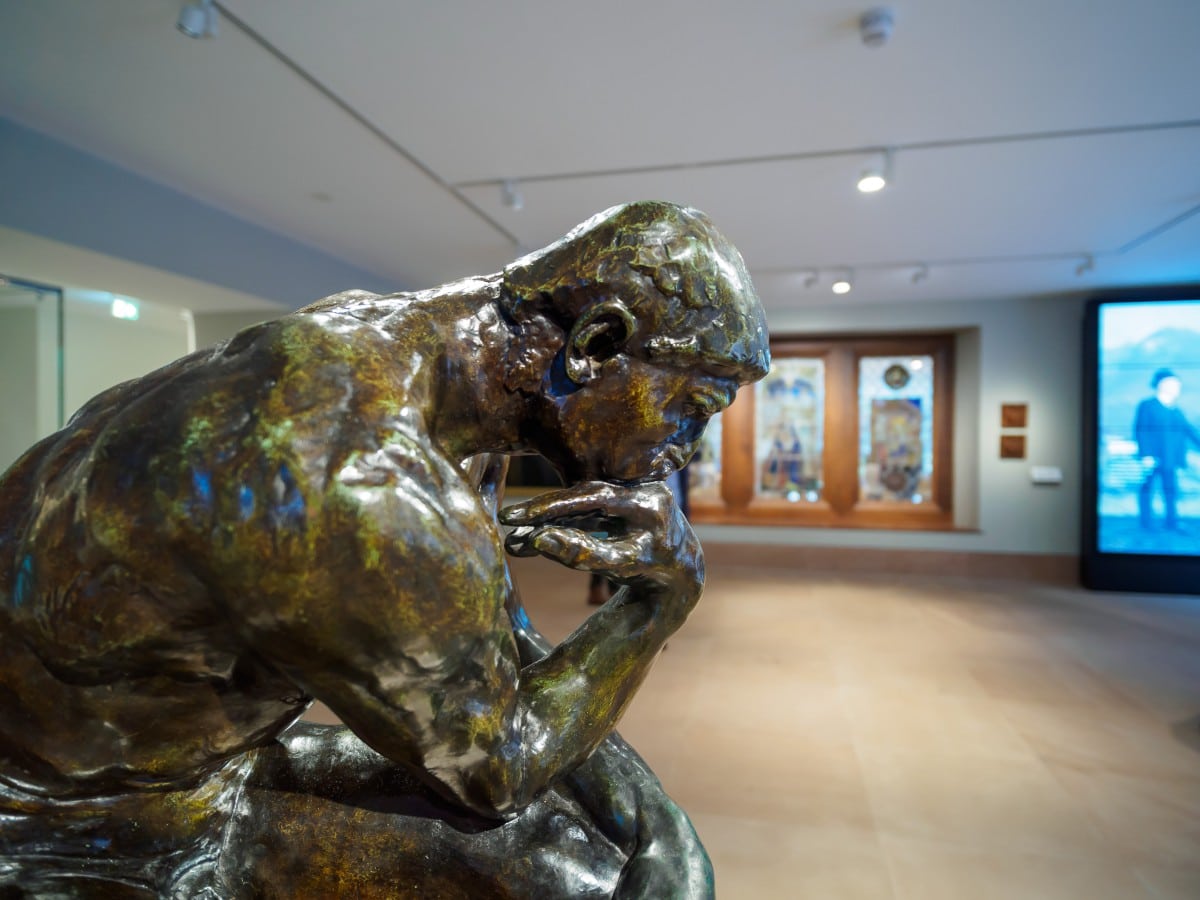
The North and East Galleries display the bulk of the exhibits, where visitors can view everything from Ming vases to mediaeval weaponry, while the central galleries house more displays and join onto spaces dedicated to the Burrell family,including a recreation of the Burrell family home at Hutton Castle.
The lower level is the location of a large space where artworks from the main collection are rotated in themed exhibitions, as well as storerooms that contain the bulk of the artworks. Although it may seem that there’s an enormous number of objects to view at The Burrell Collection, what’s on display is actually just one-fifth of the entire collection.
It’s therefore worth taking a quick peek at the lower level as there are objects on display that haven’t been seen for decades and may only be on display for a short time. This lower floor also houses a first-rate coffee shop, a restaurant, public toilets, an events space, and stairs that lead back to the ground floor with its excellent gift shop.
The first floor of the building has maker galleries that are devoted to the techniques used by artists. These galleries feature interactive displays that let visitors see the steps taken to create artwork, such as sculpting with clay or painting with oils. It’s an interesting addition to the museum and is well worth visiting, in my opinion.
Finally, there are picnic areas on the first floor for those visitors who like to take their own food, but if al-fresco dining is a preference, there are benches and seats outside on the ground floor.
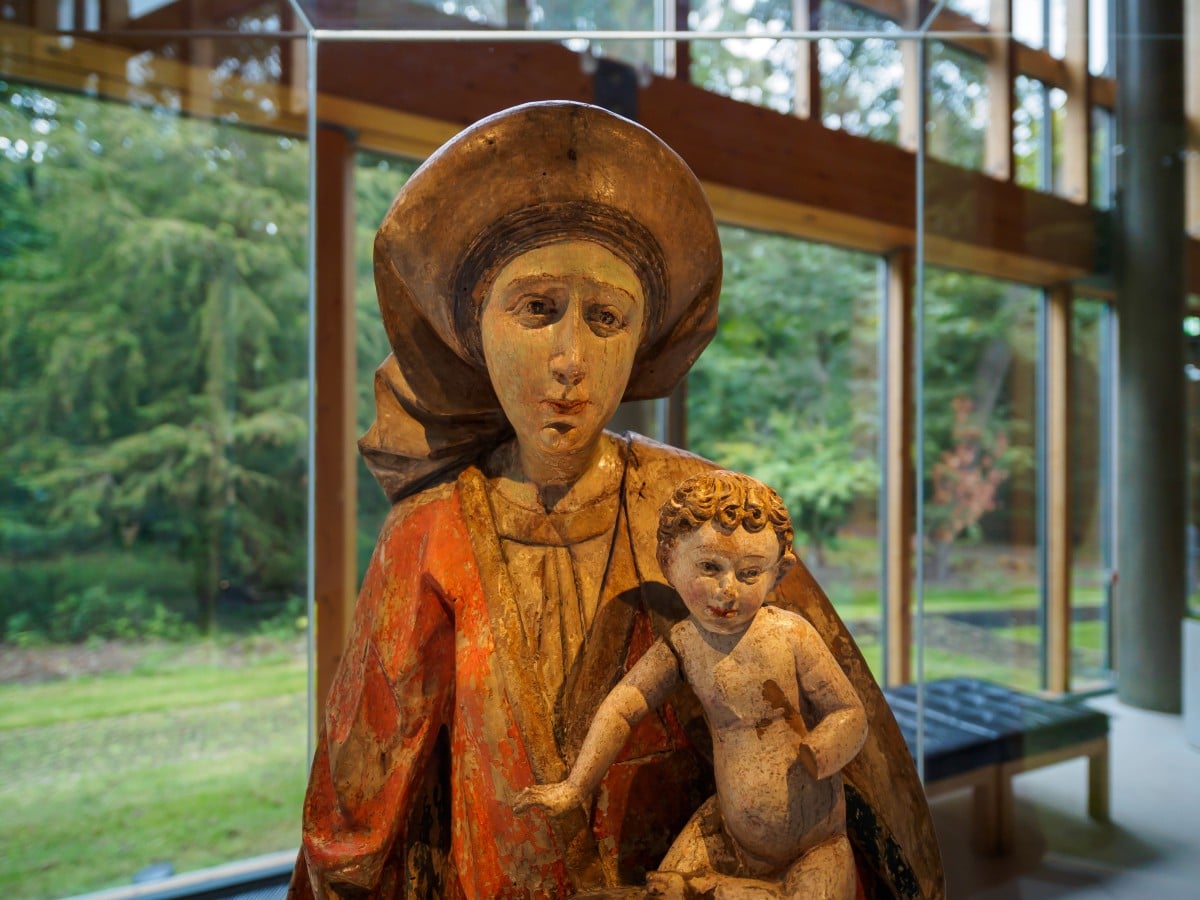
Things to Do
Explore the Art and Antiquities Collection: The Burrell Collection houses over 8,000 objects, from antiquities to modern artworks. Spend a day exploring the vast collection and then sit back and relax in the on-site restaurant.
Attend a Lecture or Workshop: The Burrell Collection frequently hosts lectures and workshops that aim to provide a deeper understanding of the collection’s many artworks. It’s a great opportunity to learn from experts and hear tales about the history of each piece.
Enjoy the shop and cafe: The modern building that houses the Burrell Collection,designed by architect Barry Gasson,features a restaurant, cafe, and shop. The shop sells a variety of quality gifts and souvenirs, while the cafe is highly recommended for light lunches. There are picnic benches on the outside patio for those visitors who prefer to bring their own food.
Enjoy the Surrounding Pollok Country Park: Located within Pollok Country Park, the Burrell Collection is surrounded by grass fields and woodland and has lots of paths that are ideal for walking and cycling.
Participate in Family Activities: The Burrell Collection is family-friendly and offers various activities for children, which is a great way to introduce them to art and history. In addition, towards the front of the building, there’s a large play park where they can burn off energy afterwards.
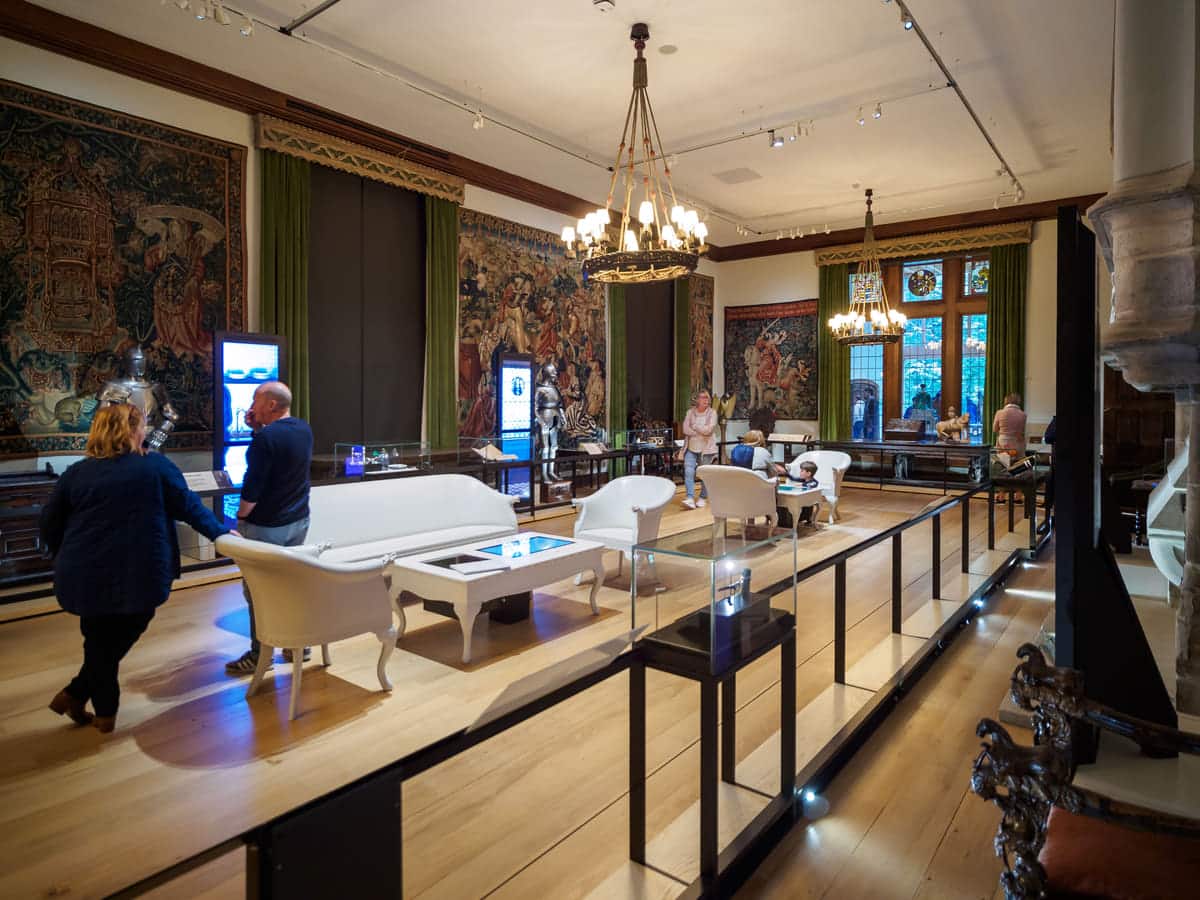
Book Tours in Scotland
Things to Do Nearby
Pollok House. Address: 2060 Pollokshaws Rd., Bellahouston, Glasgow, G43 1AT. Distance: 1 mile.
The National Trust for Scotland is in charge of managing Pollok House, a magnificent stately home. The house contains one of the finest collections of Spanish artwork in the UK, as well as extensive landscaped gardens.
Visitors can view the elegant rooms of Pollok House on a self-guided tour, from the regal drawing room to the austere downstairs passageways.
House for an Art Lover. Address: 10 Dumbreck Rd., Bellahouston, Glasgow, G41 5BW. Distance: 2.1 miles.
This museum is dedicated to the celebrated Glaswegian architect Charles Rennie Mackintosh. The house has a number of uses, including artist’s studios, exhibition spaces, and an art gallery, as well as housing a collection of works by Mackintosh himself.
Note that House for an Art Lover is occasionally hired out as a wedding venue, and at those times it’s closed to the public. See the official website for the latest opening times.
Crookston Castle. Address: 170 Brockburn Rd., Glasgow, G53 5RY. Distance: 5 miles.
This small castle on the outskirts of Glasgow dates from the 1600s. It has an unusual layout that is unique in Scotland, which comprises a tall central tower and four surrounding towers on each corner. Historic Environment Scotland is in charge of managing the castle, and admission is free.
Bellahouston Park. Address: Bellahouston, Glasgow, G52 1JL. Distance: 1.6 miles.
At 169 acres in size, Bellahouston Park is a great place to escape from the noise of Glasgow city centre. The park features bowling greens, a walled garden and formal gardens, a glasshouse, a maze, and sports facilities that include a ski centre and an outdoor cycle track.
Dams to Darnley Country Park. Address: 190 Carnwadric Road, Glasgow, G46 8HT. Distance: 3.4 miles.
This park is one of the largest in Glasgow and features 5 reservoirs, woodlands, multiple walking trails, and large areas of grassland and wetlands that are teeming with wildlife.
Frequently Asked Questions
Is The Burrell Collection free?
The Burrel Collection is completely free to enter. In addition, the museum holds regular free guided tours. Paid car parking is available in Pollok Country Park.
What’s in The Burrell Collection?
Sir William Burrell, an admirer of art, gathered over 9,000 pieces for the Burrell Collection. There are exotic tapestries, beautiful stained glass windows, Roman sculptures, Egyptian and Chinese pottery, mediaeval arms and armour, and much more.
Some of the highlights include a Roman mosaic, the Thinker statue by Auguste Rodin, and a self-portrait by Rembrandt.
Why is it called The Burrell Collection?
The Burrell Collection takes its name from the wealthy Glasgow shipping magnate Sir William Burrell (1861–1958), who spent his life collecting important artworks. Burrell shared his passion for art with his wife Constance, and over the course of 40 years, they amassed over 9,000 pieces of art.
In his will, Sir William Burrell gifted the entire collection to the city of Glasgow with the proviso that ‘the entire gift is from my wife and myself and that her name shall always be associated with mine and shall receive full acknowledgement in all official literature relating to the collection’.
How did Sir William Burrell make his money?
Sir William Burrel was born in Glasgow into a family of shipowners. He joined the family business at the age of 14 and grew it into one of the largest cargo shipping companies in Britain.
While shipping earned him his initial fortune, the bulk of his later wealth came from selling his fleet of cargo vessels at an enormous profit during the First World War.
Protect Your Family From Scotland's Biting Midges
- Powerful, reliable protection for up to 8 hours
- Water- and sweat resistant
- Repels midges, mosquitoes, horse flies, sand flies, fleas and ticks
- Safe for use on adults, children over 30 months and pregnant women
- Non-sticky, moisturising with a pleasant fragrance
- Packaging may vary





